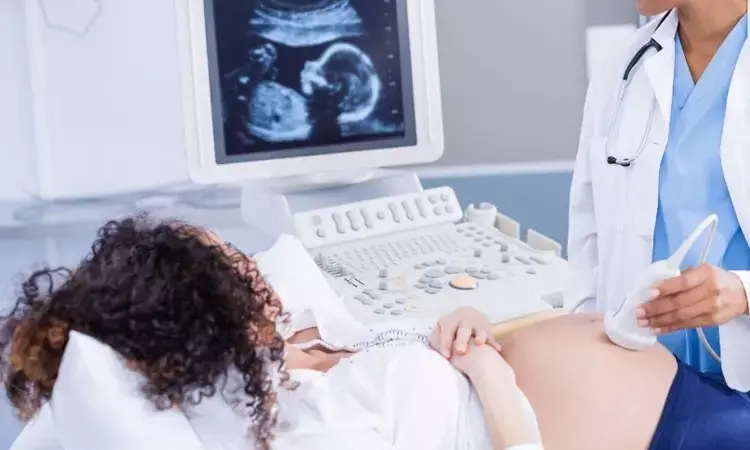- Home
- Medical news & Guidelines
- Anesthesiology
- Cardiology and CTVS
- Critical Care
- Dentistry
- Dermatology
- Diabetes and Endocrinology
- ENT
- Gastroenterology
- Medicine
- Nephrology
- Neurology
- Obstretics-Gynaecology
- Oncology
- Ophthalmology
- Orthopaedics
- Pediatrics-Neonatology
- Psychiatry
- Pulmonology
- Radiology
- Surgery
- Urology
- Laboratory Medicine
- Diet
- Nursing
- Paramedical
- Physiotherapy
- Health news
- Fact Check
- Bone Health Fact Check
- Brain Health Fact Check
- Cancer Related Fact Check
- Child Care Fact Check
- Dental and oral health fact check
- Diabetes and metabolic health fact check
- Diet and Nutrition Fact Check
- Eye and ENT Care Fact Check
- Fitness fact check
- Gut health fact check
- Heart health fact check
- Kidney health fact check
- Medical education fact check
- Men's health fact check
- Respiratory fact check
- Skin and hair care fact check
- Vaccine and Immunization fact check
- Women's health fact check
- AYUSH
- State News
- Andaman and Nicobar Islands
- Andhra Pradesh
- Arunachal Pradesh
- Assam
- Bihar
- Chandigarh
- Chattisgarh
- Dadra and Nagar Haveli
- Daman and Diu
- Delhi
- Goa
- Gujarat
- Haryana
- Himachal Pradesh
- Jammu & Kashmir
- Jharkhand
- Karnataka
- Kerala
- Ladakh
- Lakshadweep
- Madhya Pradesh
- Maharashtra
- Manipur
- Meghalaya
- Mizoram
- Nagaland
- Odisha
- Puducherry
- Punjab
- Rajasthan
- Sikkim
- Tamil Nadu
- Telangana
- Tripura
- Uttar Pradesh
- Uttrakhand
- West Bengal
- Medical Education
- Industry
MRI excellent modality to accurately diagnose acute appendicitis in pregnant women

According to a new study, Magnetic resonance (MR) imaging is a great tool to employ to rule out acute appendicitis in pregnant women. It is in fact an excellent modality for use in excluding acute appendicitis in pregnant women in whom a normal appendix is not visualized at ultrasound.
The study has been published in Radiology Journal by Ivan Pedrosa and peers.
Lower abdominal discomfort during pregnancy is frequently caused by acute appendicitis, with a frequency of 1 occurrence per 1500 pregnancies. When a pregnant patient has severe right lower quadrant discomfort, ultrasonography is the first imaging technique of choice. However, compared to the general population, the sensitivity and specificity of recognizing the appendix on ultrasonography is much lower because of the structural alterations linked to the big gravid uterus. An ambiguous ultrasound examination may call for the use of MRI to evaluate the appendix without using ionizing radiation.
For this investigation, MR images were taken of 51 pregnant women who were clinically suspected to have acute appendicitis (mean age, 28.3 years). When results from ultrasonography (US) are ambiguous or more information is required, this technique for patients who are pregnant does MRI. Appendicitis affected four patients, and it was diagnosed in three of them during surgery and one of them during a follow-up computed tomography.
Initial interpretations were used for the treatment of patients and the estimation of diagnostic precision. If the appendix's diameter was less than or equal to 6 mm, it was filled with air, oral contrast material, or both, and it was deemed normal on MR imaging. An appendix that was above 7 mm in diameter and packed with fluid was deemed abnormal. In situations where the appendix was larger than 6-7 mm in diameter, the presence of peri-appendiceal inflammation was utilized to make the final diagnosis. Using a 5-point scale, three radiologists evaluated the visibility of the appendix in the past. The median and Fisher exact tests as well as the Spearman correlation coefficient were used for statistical analysis.
The key findings of this study were as follows:
1. Four patients' MR scans revealed appendicitis, while three others' scans were ambiguous.
2. The appendix was not visible in two of the three individuals with equivocal findings, and it was somewhat enlarged (7 mm in diameter) in the third.
3. Overall MR imaging accuracy, sensitivity, specificity, positive and negative predictive values, and prevalence-adjusted values were 100%, 93.6%, 1.4%, 100%, and 94.0%, respectively.
In conclusion, The Authors found that all four individuals with clinically diagnosed acute appendicitis showed positive MRI results. By using MRI, no cases of appendicitis were overlooked.
Reference:
Pedrosa, I., Levine, D., Eyvazzadeh, A. D., Siewert, B., Ngo, L., & Rofsky, N. M. (2006). MR Imaging Evaluation of Acute Appendicitis in Pregnancy. In Radiology (Vol. 238, Issue 3, pp. 891–899). Radiological Society of North America (RSNA). https://doi.org/10.1148/radiol.2383050146
Neuroscience Masters graduate
Jacinthlyn Sylvia, a Neuroscience Master's graduate from Chennai has worked extensively in deciphering the neurobiology of cognition and motor control in aging. She also has spread-out exposure to Neurosurgery from her Bachelor’s. She is currently involved in active Neuro-Oncology research. She is an upcoming neuroscientist with a fiery passion for writing. Her news cover at Medical Dialogues feature recent discoveries and updates from the healthcare and biomedical research fields. She can be reached at editorial@medicaldialogues.in
Dr Kamal Kant Kohli-MBBS, DTCD- a chest specialist with more than 30 years of practice and a flair for writing clinical articles, Dr Kamal Kant Kohli joined Medical Dialogues as a Chief Editor of Medical News. Besides writing articles, as an editor, he proofreads and verifies all the medical content published on Medical Dialogues including those coming from journals, studies,medical conferences,guidelines etc. Email: drkohli@medicaldialogues.in. Contact no. 011-43720751


